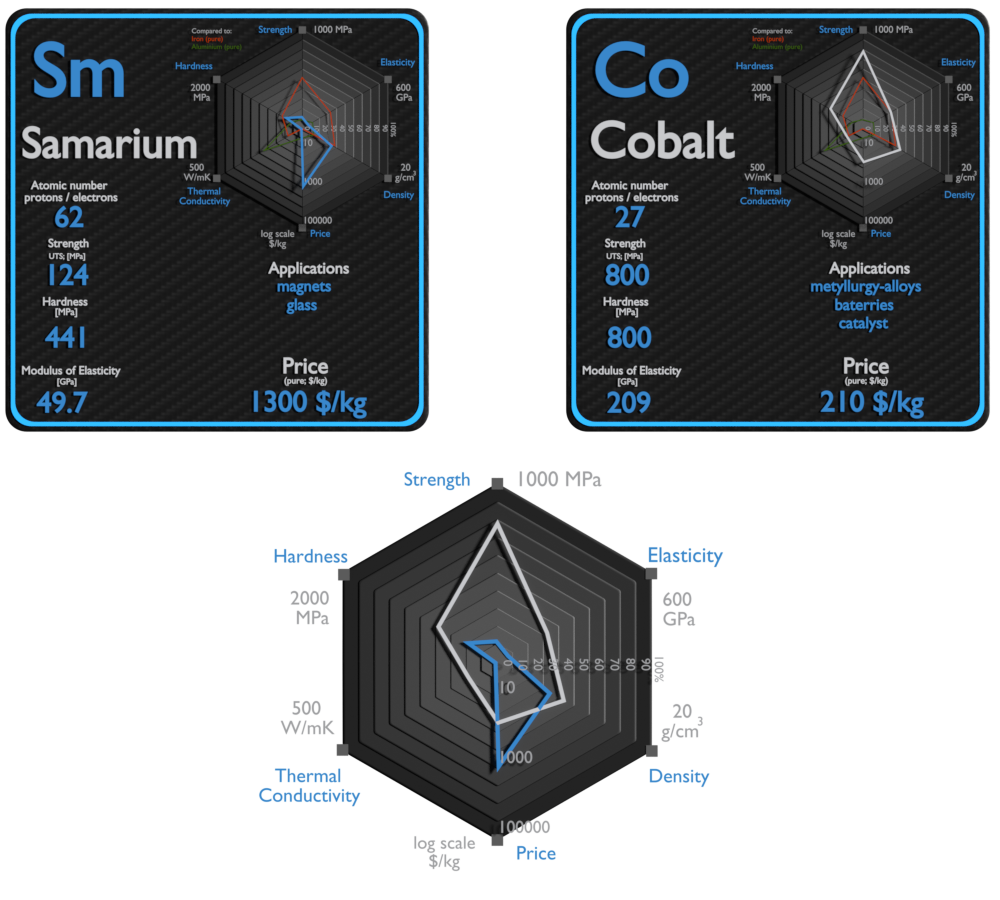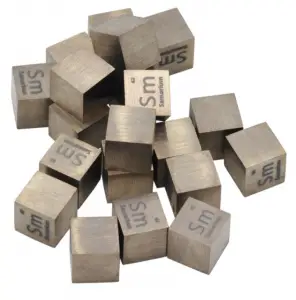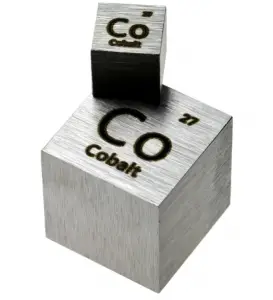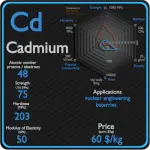This article contains comparison of key thermal and atomic properties of samarium and cobalt, two comparable chemical elements from the periodic table. It also contains basic descriptions and applications of both elements. Samarium vs Cobalt.

Samarium and Cobalt – About Elements


Source: www.luciteria.com
Samarium and Cobalt – Applications
Samarium
Samarium is mainly used in preparing samarium-cobalt alloy magnets for electric guitars, small motors and headphones. Samarium-cobalt magnets are much more powerful than iron magnets. They remain magnetic at high temperatures and so are used in microwave applications. They enabled the miniaturisation of electronic devices. However, neodymium magnets are now more commonly used instead. Its oxide is used for manufacturing special infrared adsorbing glass for carbon arc-lamp electrodes. It is useful in doping calcium fluoride crystals employed in optical lasers.
Cobalt
Cobalt has been used in many industrial, commercial, and military applications. Cobalt is primarily used in lithium-ion batteries, and in the manufacture of magnetic, wear-resistant and high-strength alloys. Cobalt-based Superalloys. This class of alloys is relatively new. In 2006, Sato et al. discovered a new phase in the Co–Al–W system. Unlike other superalloys, cobalt-base alloys are characterized by a solid-solution-strengthened austenitic (fcc) matrix in which a small quantity of carbide is distributed. While not used commercially to the extent of Ni-based superalloys, alloying elements found in research Co-based alloys are C, Cr, W, Ni, Ti, Al, Ir, and Ta. They possess better weldability and thermal fatigue resistance as compared to nickel based alloy. Moreover, they have excellent corrosion resistance at high temperatures (980-1100 °C) because of their higher chromium contents. Several cobalt compounds are oxidation catalysts. Typical catalysts are the cobalt carboxylates (known as cobalt soaps). They are also used in paints, varnishes, and inks as “drying agents” through the oxidation of drying oils.
Samarium and Cobalt – Comparison in Table
| Element | Samarium | Cobalt |
| Density | 7.353 g/cm3 | 8.9 g/cm3 |
| Ultimate Tensile Strength | 124 MPa | 900 MPa |
| Yield Strength | 110 MPa | 220 MPa |
| Young’s Modulus of Elasticity | 49.7 GPa | 209 GPa |
| Mohs Scale | N/A | 5 |
| Brinell Hardness | 441 MPa | 800 MPa |
| Vickers Hardness | 412 MPa | 1040 MPa |
| Melting Point | 1074 °C | 1495 °C |
| Boiling Point | 1900 °C | 2927 °C |
| Thermal Conductivity | 19 W/mK | 100 W/mK |
| Thermal Expansion Coefficient | 12.7 µm/mK | 14 µm/mK |
| Specific Heat | 0.2 J/g K | 0.42 J/g K |
| Heat of Fusion | 8.63 kJ/mol | 16.19 kJ/mol |
| Heat of Vaporization | 192 kJ/mol | 376.5 kJ/mol |









